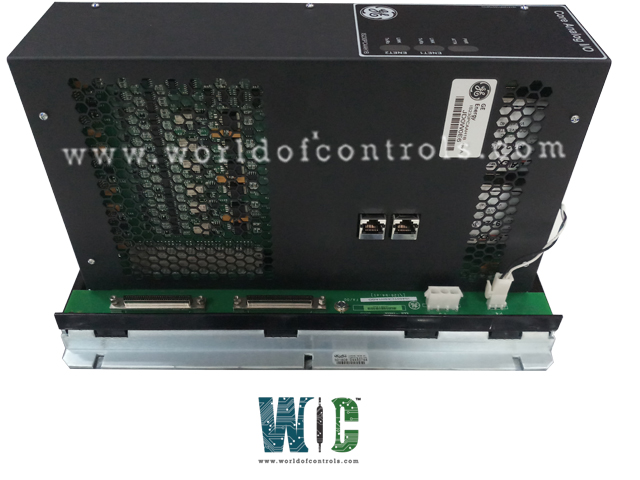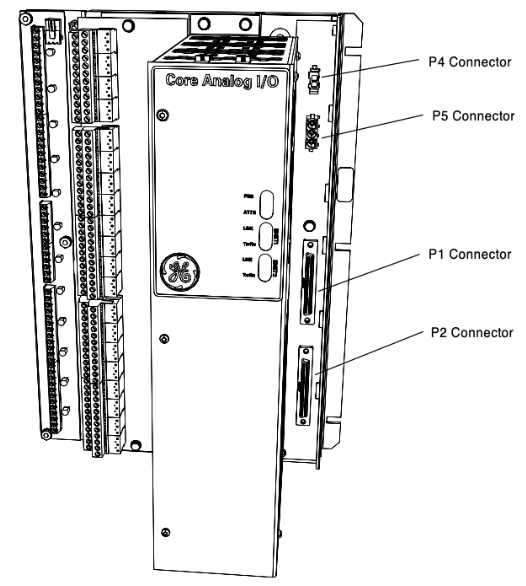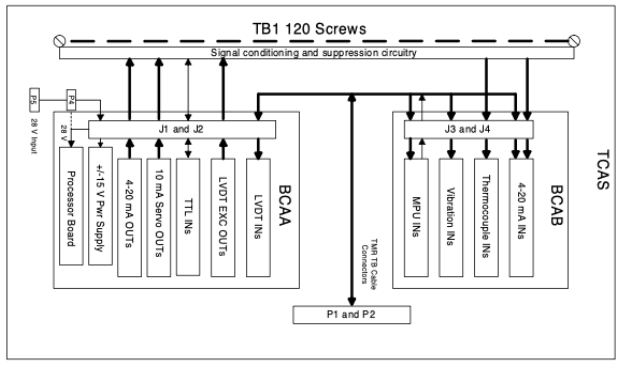
World Of Controls understands the criticality of your requirement and works towards reducing the lead time as much as possible.
IS230PCAAH1B - Core Analog I/O Module is available in stock which ships the same day.
IS230PCAAH1B - Core Analog I/O Module comes in UNUSED as well as REBUILT condition.
To avail our best deals for IS230PCAAH1B - Core Analog I/O Module, contact us and we will get back to you within 24 hours.
SPECIFICATIONS
Part Number: IS230PCAAH1B
Manufacturer: General Electric
Series: Mark VIe
Product Type: I/O Module
Number of Inputs: 25
Number of Outputs: 4-20 mA
Analog 0-10 V DC Inputs: ±0.50%
LVDT Excitation Monitor Input: ±1.00%
Servo Driver Output: ±3.50%
Power Supply Input Voltage: 28Vdc±5%
Size: 33.02cm high x17.8 cm wide
Technology: Surface-Mount
Operating Temperature: -30 to 65oC
Availability: In Stock
Product of Origin: U.S.A
Manual: GEH-6721L
FUNCTIONAL DESCRIPTION
IS230PCAAH1B is a Core Analog I/O Module manufactured and designed by General Electric as part of the Mark VIe Series used in distributed control systems. A sizable amount of the analog signal I/O needed to run a gas turbine is provided by the Core Analog (PCAA) module and related Core Analog (TCAS and TCAT) terminal board. Thermocouple, 4-20 mA current loop, seismic, linear variable differential transformer (LVDT) excitation and inputs, pulse rate, and servo coil outputs are all provided by PCAA and TCAT. In simplex, dual, and TMR systems, PCAA is applicable. To one, two, or three linked PCAA modules, a single TCAT terminal board fans signal inputs. In addition to the terminals on PCAA and TCAT, a nearby JGPA board also has shield ground and 24 V field power connectors.

Fig 1: PCAA Core Analog
COMPATIBILITY:

Each Mark VIe I/O pack and controller is fully compatible with the PCAA module. The following table lists the frame rates, redundancy, and networking that PCAA supports.
INSTALLATION:
OPERATION:
The PCAA module is a physical assembly made up of four different circuit boards. Because it is challenging to narrow down a failure to a specific board, the module is thought of as the least replaceable component. Individual boards cannot be replaced with the module.

Fig 2: PCAA Board Relationship Diagram
Each Mark VIe Ethernet I/O pack or module shares a processing board. It has the following in it:
At frame rates of 40 and 10 ms, the PCAA module is intended to operate. Each signal type has a list of accuracy requirements that take into account all factors, including aging, temperature, power supply input change, and product variance. It also lists the mean and standard deviation for each signal type's typical accuracy at 25 C. The specified accuracy is the ultimate worst-case limit on the signal accuracy, but the usual accuracy is comparable to the precision that may be anticipated in regular operation.
WOC has the largest stock of GE Speedtronic Mark VIe Control System Replacement Parts. We can also repair your faulty boards. WORLD OF CONTROLS can also supply unused and rebuilt backed-up with a warranty. Our team of experts is available round the clock to support your OEM needs. Our team of experts at WOC is happy to assist you with any of your automation requirements. For pricing and availability on any parts and repairs, kindly get in touch with our team by phone or email.
FREQUENTLY ASKED QUESTIONS
What is GE Mark VIe IS230PCAAH1B?
IS230PCAAH1B is a Core Analog I/O Module developed by General Electric and used in distributed control systems.
How to Check Price and Availability For IS230PCAAH1B?
Please Contact World of Controls FZE for sales at +1 609 385 1231 or Request a Quote.
How are boards packaged for shipment from WOC?
Parts are placed in antistatic packets and securely packed in ESD boxes cushioned with ESD Foam designed to safeguard electrical components.